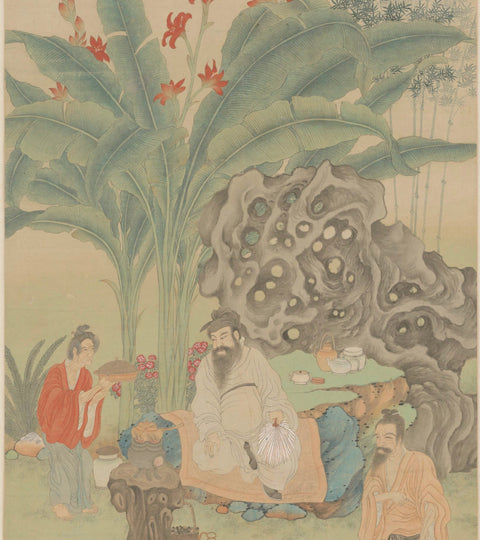The teapot, a beloved vessel for centuries, tells a fascinating story of cultural change and shifting tastes. As we trace the transformation of teapots from large ceremonial pots to the smaller, more personal ones we use today, we learn about how tea culture has evolved. What caused this change in teapot size? How have different types of tea influenced the design of teapots? And what do these changes reveal about how tea is enjoyed in different times and places?
Teapots: From Large to Small
Over 2,000 years of Chinese tea history have seen three major ways to prepare tea. In the Tang Dynasty, tea was boiled. During the Song Dynasty, tea was ground into powder (a precursor to Japanese matcha). By the Ming Dynasty, a new method of brewing loose-leaf tea directly in the pot, called “san cha fa” (散茶法), became popular.
In the early Ming Dynasty, teapots were much larger than today. One famous potter, Shi Dabin, made teapots that held 2-3 liters of tea. This size was suitable for the green tea culture in regions like Zhejiang and Jiangsu. However, people soon realized that large pots diluted the tea’s flavor and made drinking too much at once uncomfortable.


The Taste of Change: Tea Types and Pot Sizes
As tea culture grew, teapots got smaller. In the late Ming period, teapots shrank quickly, with some as small as 100 milliliters. This change continued into the Qing Dynasty as semi-oxidized teas like oolong became popular. The shift is similar to the move from filter coffee to espresso—making the tea stronger and more concentrated.
The link between the type of tea and the size of the teapot became clear. In northern China, medium-sized pots of about 500 milliliters remained popular for green tea. But in regions like Guangdong and Fujian, known for oolong tea, smaller teapots of less than 100 milliliters became the norm. These smaller pots worked better for the stronger, multi-infusion oolong teas.
Regional Differences in Teapots
The variety of teapot sizes across China reflects the different types of tea grown and the ways people drink tea. In northern China, medium-sized teapots suited the traditional green tea brewing methods. The famous “man sheng hu” (蔓生壺), which holds about 500 milliliters, is an example of this tradition.
In southern China, especially in Guangdong and Fujian, where oolong tea originates, smaller teapots became common. These small pots, often under 100 milliliters, were perfect for oolong tea’s strong flavor and multiple infusions. The difference in teapots shows not only different tastes but also the distinct tea cultures in these regions.

Beijing Palace Museum Qing Dynasty Man sheng hu (蔓生壺)
Brewing Insights: Lessons from the Teapot’s Journey
Looking at the history of teapots gives us more than just insight into ceramics and pottery. It’s a reflection of cultural change and adaptation. The evolution of teapots shows that innovation often comes from practical needs, like wanting better-tasting tea and more efficient ways to brew it. The regional differences remind us that local culture plays a big role in shaping how we enjoy tea.
The evolution of teapots also highlights the relationship between craftsmanship and consumer needs. Potters like Shi Dabin responded to feedback from tea drinkers, adjusting their designs to meet changing preferences. This connection between maker and user continues to influence the design of teapots today.
Most importantly, the evolution of teapots teaches us that tradition is not fixed—it evolves through experimentation and improvement over time. As we use modern teapots today, we continue this ongoing journey, honoring both innovation and the appreciation of tea as an art form.

Teapot from 180andup
As tea master Huang Jianliang from the Taiwan Palace Museum, and expert on Zhuni ceramic history wisely observes, "The beauty and allure of tea lie in historical connections and constant evolution."

